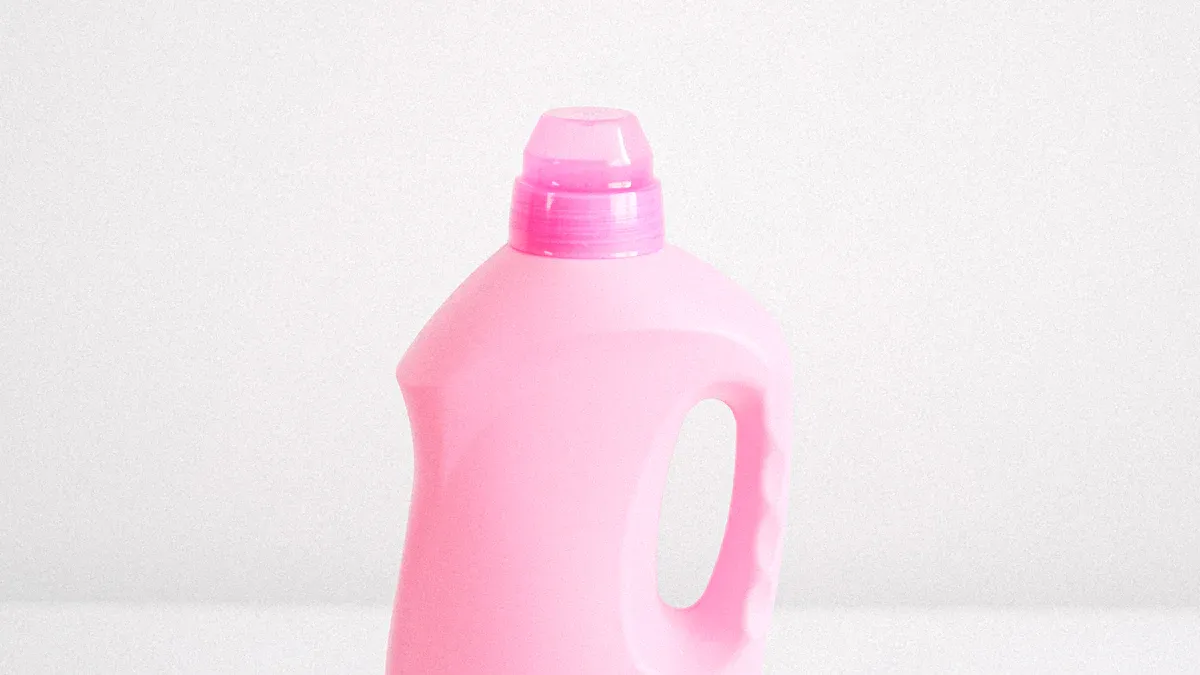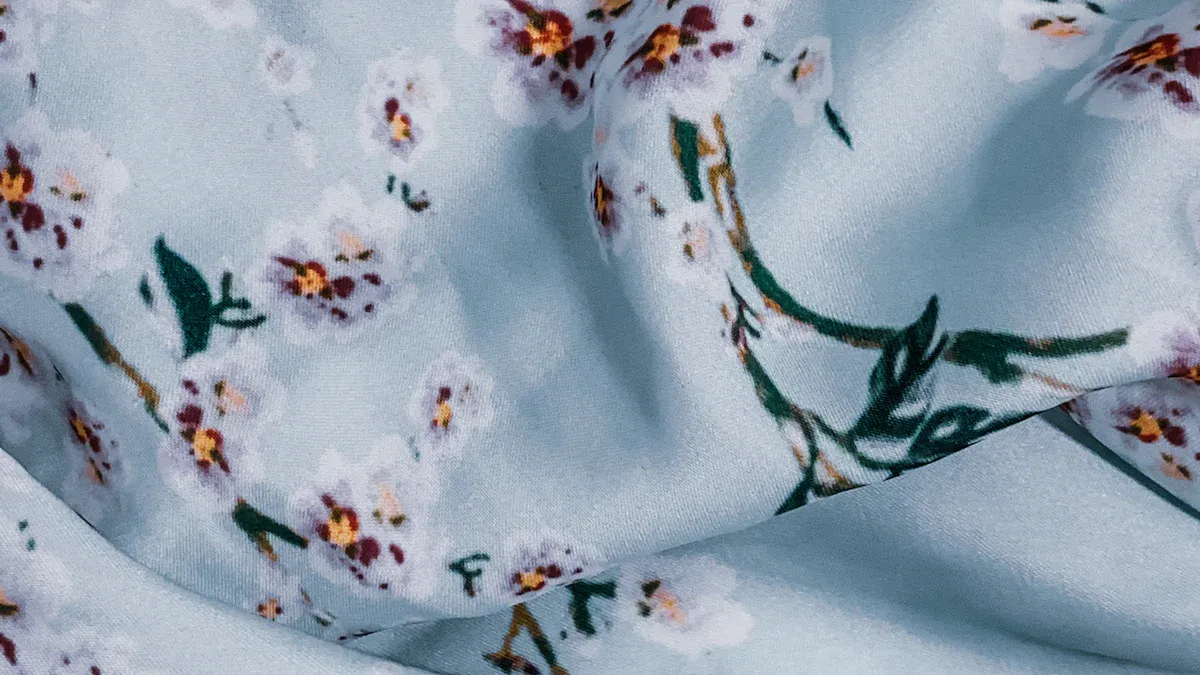You should not use fabric softener when you wash satin fabric. Fabric softener can leave residue on satin fabric that dulls its shine and weakens the fibers. To keep your satin fabric soft and bright, wash it gently and handle it with care. Using the right methods will help maintain your favorite satin fabric pieces looking beautiful.
Key Takeaways
- Never use fabric softener on satin because it dulls the shine and weakens the fibers.
- Wash satin gently with mild detergent and cool or lukewarm water to keep it soft and bright.
- Hand washing is best, but if you use a machine, choose a gentle cycle and protect the fabric with a mesh bag.
- Dry satin by laying it flat or hanging it in the shade to avoid damage from heat and sunlight.
- Store satin in a cool, dry place using padded hangers or tissue paper to keep it smooth and crease-free.
Why Avoid Fabric Softener on Satin Fabric
Risks to Shine and Texture
When you use fabric softener on satin fabric, you risk losing the beautiful shine that makes satin special. Satin gets its smooth, glossy look from the way the fibers are woven. Fabric softener can coat these fibers with a thin layer of oil and chemicals. This coating blocks light from reflecting off the surface. As a result, your satin may start to look dull and lifeless.
Tip: If you want to keep your satin looking shiny, always skip the fabric softener. Gentle washing helps the fabric keep its natural glow.
You may also notice changes in the texture. Satin should feel smooth and soft. Fabric softener can make the surface feel sticky or heavy. Over time, this sticky feeling can get worse, especially if you wash the fabric often.
Residue and Fiber Damage
Fabric softeners contain water, soap, and oils like olive, corn, or tallow oil. When you add these to your laundry, they leave deposits on the fibers. Satin fabric is delicate, so these deposits can cause problems quickly. The residue acts like a magnet for dust and dirt. Each time you wear or wash your satin, more particles stick to the fabric.
This buildup does not just make the fabric look dirty. It can also weaken the fibers. Dirt and dust rub against the threads, causing them to break down faster. Over time, your satin fabric may show signs of wear, such as thinning spots or small tears. You might think fabric softener makes your clothes softer, but for satin, it does the opposite. It shortens the life of your favorite pieces.
Note: Washing satin without fabric softener helps protect the fibers and keeps your fabric looking new for longer.
How to Wash Satin Fabric Safely

Hand Washing Steps
Hand washing gives you the most control over how you care for satin fabric. This method helps you avoid damage and keeps the fabric soft and shiny. Experts agree that hand washing is the safest choice for delicate items.
Here is a step-by-step guide to hand washing satin fabric:
| Step | What You Should Do |
|---|---|
| 1. | Check the care label for special instructions. Some satin types, like silk satin, may need dry cleaning. |
| 2. | Fill a basin with lukewarm water (not hotter than 77°F or 25°C). |
| 3. | Add a small amount of mild detergent made for delicates. Avoid bleach and harsh chemicals. |
| 4. | Turn the garment inside out to protect the shiny surface. |
| 5. | Submerge the satin fabric and gently swirl it for 3-5 minutes. Do not rub or wring. |
| 6. | Rinse under cool water until all soap is gone. |
| 7. | Lay the item flat on a clean towel. Roll it up and press gently to remove extra water. Do not twist. |
| 8. | Lay flat or hang to air dry in a cool, shaded place. Keep away from direct sunlight. |
Tip: Always test a small, hidden area for colorfastness before washing the whole item. This helps you avoid unwanted color changes.
Machine Washing Tips
You can use a washing machine for some types of satin fabric, such as polyester or nylon satin. Machine washing saves time, but you must use extra care to prevent damage.
- Turn garments inside out before washing.
- Place items in a mesh laundry bag to protect them from snagging.
- Use the delicate or gentle cycle with cold water and a low spin speed.
- Add a mild detergent designed for delicate fabrics.
- Wash satin fabric with other light, delicate items. Do not overload the machine.
- Remove items as soon as the cycle ends to prevent wrinkles.
Note: Never use bleach or fabric softener sheets in the washer or dryer. These products can harm the fibers and reduce the shine.
Drying and Storing
Proper drying and storage help keep your satin fabric looking new. Air drying is the best way to protect the fabric’s texture and shine.
- After washing, lay the item flat on a clean towel. Roll it up and press gently to remove water.
- Lay the fabric flat on a dry towel or hang it on a padded hanger in a cool, shaded place.
- Keep satin fabric out of direct sunlight to prevent fading.
- Do not use high heat in the dryer. If you must use a dryer, choose the lowest heat setting and remove the item while it is still slightly damp.
- Store satin fabric in a cool, dry place. Use padded hangers or fold items with tissue paper to avoid creases.
Reminder: Never wring or twist satin fabric. Gentle handling keeps the fibers strong and the surface smooth.
Common Mistakes to Avoid
Using Fabric Softeners
Many people think fabric softener makes all fabrics feel better. This is not true for satin fabric. When you use fabric softener, you leave a coating on the surface. This coating traps dirt and dust. Over time, your fabric loses its shine and feels sticky. You also risk weakening the fibers. If you want your satin to stay smooth and glossy, always skip the fabric softener. Choose a mild detergent instead.
Tip: Always check the care label before washing. Some satin items need special care.
Hot Water or Harsh Cycles
Hot water can damage satin fabric. High temperatures cause the fibers to shrink or lose their shape. If you use a harsh wash cycle, the fabric may snag or tear. Always wash satin in cold or lukewarm water. Pick the gentle or delicate cycle on your washing machine. This helps protect the smooth surface and keeps your clothes looking new.
Here is a quick guide:
| Mistake | What Happens to Satin? |
|---|---|
| Hot water | Shrinks or distorts fabric |
| Harsh wash cycles | Causes snags and tears |
| High spin speeds | Increases wrinkles |
Skipping Gentle Handling
Gentle handling is very important for satin fabric. If you skip gentle steps, you risk damaging the delicate structure. Here are some problems that can happen:
- Chafing and yarn shifting can cause the fabric to look worn.
- Not turning garments inside out or skipping a net bag increases abrasion.
- Too much moisture or rough agitation can make the fabric lose its shine.
- Using the wrong stain removal tools can break the fibers.
- Pressing with too much heat or spraying water on certain types can distort the fabric.
You should always handle satin with care. Turn items inside out, use a mesh bag, and avoid rough treatment. These steps help your satin last longer and keep its beautiful look.
Tips for Satin Fabric Care

Maintaining Softness and Shine
You want your satin to stay soft and shiny. There are easy ways to do this. Wash satin with other soft fabrics. This stops rough clothes from scratching it. Turn your satin inside out before washing. This helps keep the outside smooth. Put satin in a mesh laundry bag in the washer. Pick a gentle cycle and use cool water. This keeps your fabric safe.
Washing without fabric softener helps satin keep its shine. Fabric softeners can block moisture and make satin look dull.
Be gentle with your satin. Do not rub or twist it. Dry satin by hanging it up or laying it flat. If you use a dryer, take it out while still a little damp. Try not to iron satin. If you must, use low heat and put a cloth on top.
People like ways to keep their clothes soft and new. Studies show satin shines when light bounces off it. Keeping satin smooth and clean helps it stay shiny.
Safe Storage Practices
Storing satin the right way keeps it looking nice. Put your satin in a clean, dry spot away from sunlight. Sunlight can fade colors and make the fabric weak. Use garment bags that let air in or wrap satin in tissue paper. This keeps dust away and lets air move, so mildew does not grow.
- Fold or roll satin with tissue paper between layers to stop creases.
- Hang light satin clothes on padded hangers in a cool closet.
- Do not use plastic bags for storage. Plastic holds in water and can hurt the fabric.
- Make sure satin is clean before you put it away. Old stains get harder to clean.
A place with steady temperature and not too much moisture keeps satin safe.
If you follow these tips, your satin will look good and last longer.
You now know how to keep your satin looking its best. Skip fabric softener to protect the shine and strength. Use gentle washing steps and handle your items with care.
- Wash with mild detergent
- Use cool water
- Dry away from sunlight
Remember: Careful washing helps your clothes last longer. Enjoy your beautiful pieces for years to come!
FAQ
Can you use vinegar as a natural fabric softener for satin?
You should not use vinegar on satin. Vinegar can damage the delicate fibers and dull the shine. Stick to mild detergent and gentle washing methods for the best results.
What detergent works best for satin fabric?
Choose a mild, liquid detergent made for delicate fabrics. Avoid powders and strong chemicals. These can scratch or weaken the satin. Always read the care label before washing.
How do you remove wrinkles from satin safely?
Use a steamer or iron on the lowest heat setting. Place a clean cloth between the iron and the satin. Never press directly on the fabric. This protects the shine and prevents burns.
Can you spot clean stains on satin?
Yes, you can spot clean stains. Dab the area gently with a soft cloth and mild detergent. Do not rub or scrub. Rinse with cool water and let the fabric air dry.



